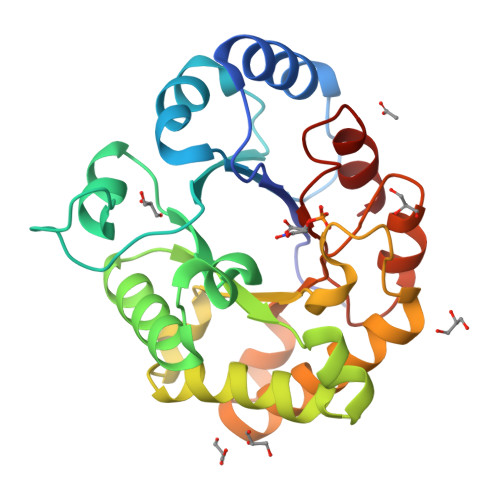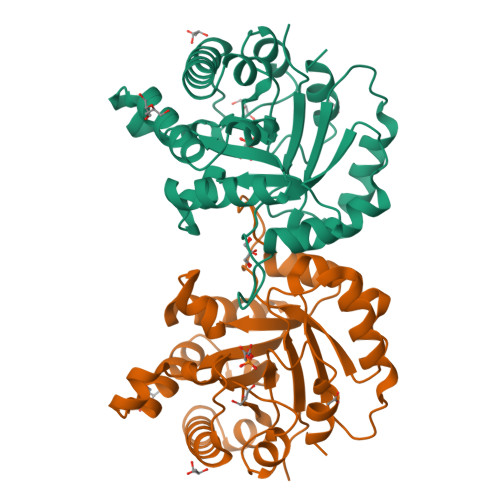Atomic Resolution Crystallography of a Complex of Triosephosphate Isomerase with a Reaction-Intermediate Analog: New Insight in the Proton Transfer Reaction Mechanism
Alahuhta, M., Wierenga, R.K.(2010) Proteins 78: 1878
- PubMed: 20235230
- DOI: https://doi.org/10.1002/prot.22701
- Primary Citation of Related Structures:
2VXN - PubMed Abstract:
Enzymes achieve their catalytic proficiency by precisely positioning the substrate and catalytic residues with respect to each other. Atomic resolution crystallography is an excellent tool to study the important details of these geometric active-site features. Here, we have investigated the reaction mechanism of triosephosphate isomerase (TIM) using atomic resolution crystallographic studies at 0.82-A resolution of leishmanial TIM complexed with the well-studied reaction-intermediate analog phosphoglycolohydroxamate (PGH). Remaining unresolved aspects of the reaction mechanism of TIM such as the protonation state of the first reaction intermediate and the properties of the hydrogen-bonding interactions in the active site are being addressed. The hydroxamate moiety of PGH interacts via unusually short hydrogen bonds of its N1-O1 moiety with the carboxylate group of the catalytic glutamate (Glu167), for example, the distance of N1(PGH)-OE2(Glu167) is 2.69 +/- 0.01 A and the distance of O1(PGH)-OE1(Glu167) is 2.60 +/- 0.01 A. Structural comparisons show that the side chain of the catalytic base (Glu167) can move during the reaction cycle in a small cavity, located above the hydroxamate plane. The structure analysis suggests that the hydroxamate moiety of PGH is negatively charged. Therefore, the bound PGH mimics the negatively charged enediolate intermediate, which is formed immediately after the initial proton abstraction from DHAP by the catalytic glutamate. The new findings are discussed in the context of the current knowledge of the TIM reaction mechanism.
Organizational Affiliation:
Department of Biochemistry, Biocenter Oulu, University of Oulu, Oulu, Finland.






















